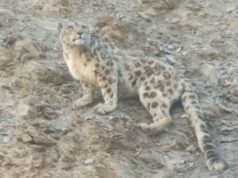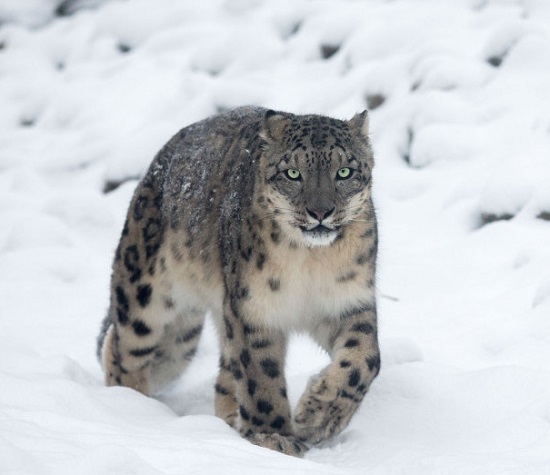Shimla: Himachal Pradesh has become the first state to complete assessment of snow leopard and its wild prey. The assessment of snow leopard population in has been completed by the state wildlife wing in collaboration with Nature Conservation Foundation (NCF) Bangalore following the protocol aligning with the SPAI (Snow Leopard Population Assessment in India) protocols of the Ministry of Environment, Forests and Climate Change.
It is the first scientifically robust estimate of snow leopards and its prey for the State. Since snow leopard is the state animal, the study assumes great significance for Himachal Pradesh.
The state has an estimated population of up to 73 snow leopards.
The exercise revealed that snow leopard density ranged from 0.08 to 0.37 individuals per 100 sq.km., with the trans-Himalayan regions of Spiti, Pin valley and upper Kinnaur recording the highest densities, both of the predator and its prey, mainly ibex and blue sheep.
This study covered the entire potential snow leopard habitat of Himachal Pradesh: an area of 26,112 sq.km., utilising a stratified sampling design. Camera trapping surveys were conducted at 10 sites to representatively sample all the strata i.e., high, low and unknown. The camera trap deployment over the mountainous terrains was led by a team of eight local youth of Kibber village and more than 70 frontline staff of HPFD were trained in this technique as part of the project. Snow leopards were detected at all the 10 sites (Bhaga, Chandra, Bharmour, Kullu, Miyar, Pin, Baspa, Tabo, Hangrang & Spiti) suggesting that snow leopards are found in the entire snow leopard habitat in Himachal Pradesh either as resident individuals of a population or as dispersing individuals navigating through these connecting habitats.
Another revelation from the study is that a bulk of snow leopard occurrence is outside protected areas, reiterating the fact that local communities are the strongest allies for conservation in snow leopard landscapes.
The NCF and wildlife wing collaborated in the effort and it took three years to complete the assessment, which will also serve as a robust baseline for the Wildlife wing for long term monitoring of the snow leopard landscape.
Forest Minister Rakesh Pathania congratulated the wildlife wing and said that the results provide a robust baseline for wildlife wing to set up a long term monitoring project to track the population of snow leopard and its wild prey species in the State.








